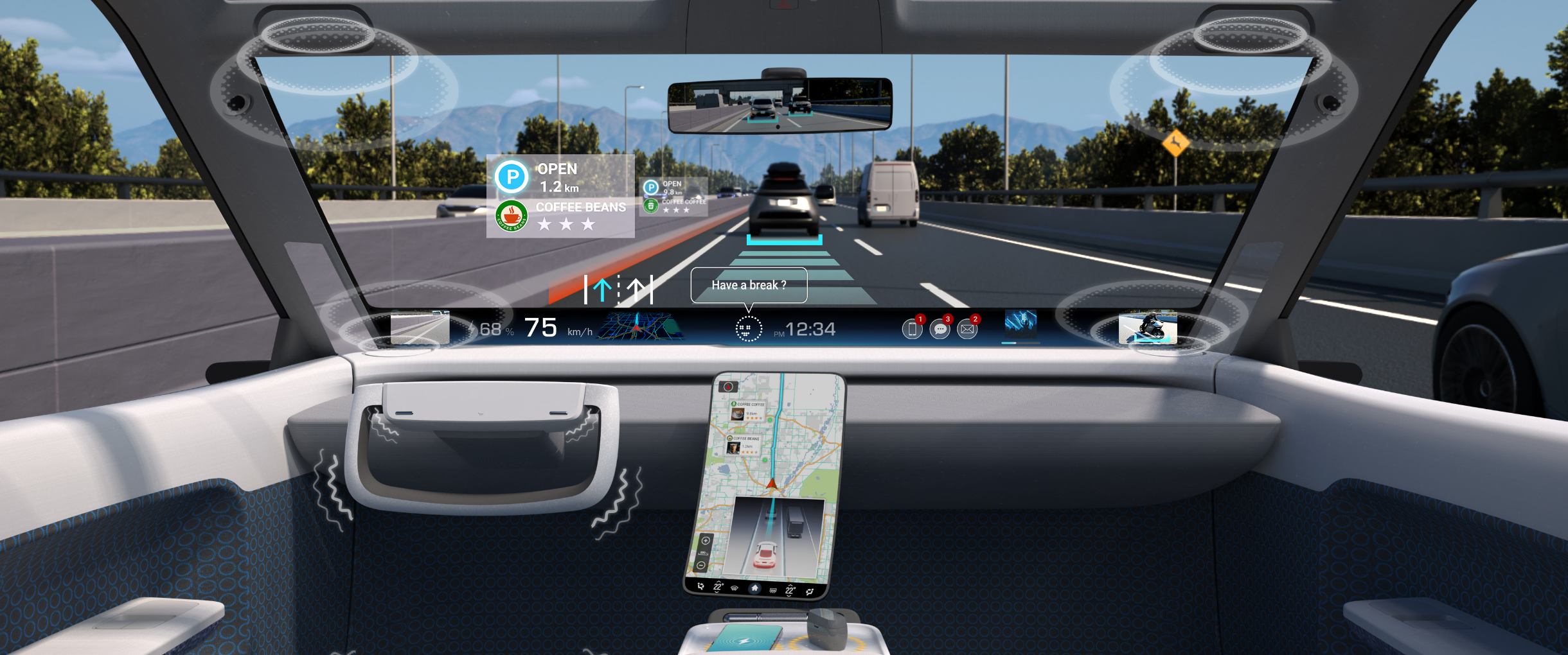
Innovation
SDV—Panasonic Automotive Systems’ ambitious initiative to achieve software-first development
What is SDV?
Software-Defined Vehicle (SDV) is an important concept that underpins how tomorrow’s cars will evolve. Traditionally, changing a car’s functions required changing its hardware. With SDV, however, you can add new functions and enhance the user experience through software updates—just like on smartphones.
Some vehicles are already SDV-enabled, receiving new functions post-shipment through over-the-air software updates via the cloud. In the future, the way we use and interact with cars is expected to change dramatically—in-vehicle settings that automatically adapt to the occupants, safety features that update in real time based on road conditions, and more.
Drawing on our technologies and experience in developing large-scale software, Panasonic Automotive Systems supports the evolution of SDV by pioneering new virtualization technologies and driving their standardization across the industry.
Our strength in SDV: software-first development
We have decades of experience developing automotive software, often considered the “brain” of a car.
In particular, we dominate the global market in the field of In-Vehicle Infotainment (IVI), which includes car navigation systems, music, video and more.
Our approach to a "software-first” development prioritizes software development, with hardware subsequently designed to complement the software. This methodology increases development speed significantly and allows us to deliver new value faster and more flexibly.
Our initiatives
(1) Using the VirtIO virtualization interface
We develop and apply virtualization technology to enable software development without the need for the actual hardware.
Central to this initiative is the expansion of the VirtIO virtualization interface for in-vehicle software. This provides a common platform that allows the same software to run stably on different hardware and cloud environments.
We have open-sourced VirtIO, which is used in in-vehicle systems, and are actively driving its adoption and standardization across the industry.
(2) Enabling cloud-native development
We build our development environment in the cloud to enable development teams around the world to develop and test software in the same environment. We provide a virtual development environment called vSkipGen (Virtual SkipGen) in cooperation with Amazon Web Service (AWS)*, a cloud service environment provider. In this environment, software developed in the cloud can be deployed directly onto VirtIO-compatible in-vehicle hardware. This greatly accelerates the overall development process because development can begin even before the actual hardware is available.
For more click Link below
AWS Marketplace: vSkipGen - Panasonic Automotive Systems, LLC
(3) Developing the Unified HMI virtualized display system
This technology integrates the control of multiple in-vehicle displays into a single virtual display. It allows for flexible exploration and modification of display layouts and functions, enabling rapid iteration and continuous refinement of the user experience (UX) design. We are also open-sourcing Unified HMI.
The flexibility to accommodate different display sizes and layouts greatly accelerates the UX development process.
(4) Establishing global industry standards and ecosystem
In addition to open-sourcing our technologies, we also collaborate with industry associations and other companies to develop global standards for these technologies, as well as to establish a robust global ecosystem.
Through active industry engagement, we are spearheading the evolution of the common platform that is essential for the SDV era.
Websites for various industry associations:
・Linux Foundation Gold Members
・AUTOMOTIVE GRADE LINUX Platinum Members
・Automotive Grade Linux Steering Committee
We are paving the way for the future of cars by promoting software-first development for the SDV era.
Our technology plays a role in building a safer and more comfortable mobility society.
- *Amazon Web Services and AWS are trademarks of Amazon.com, Inc. or its affiliates in the United States and/or other countries.

